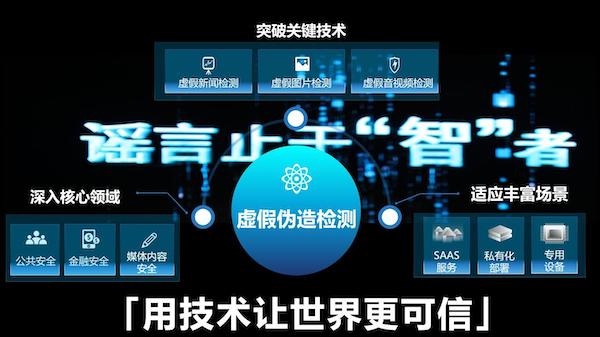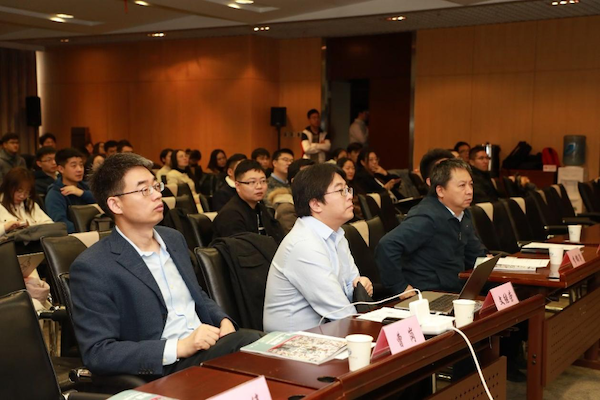
- Home
- Media Center
-
Events
- Wuzhen Summit
- Regional Forums
- Practice Cases of Jointly Building a Community with a Shared Future in Cyberspace
- World Internet Conference Awards for Pioneering Science and Technology
- The Light of Internet Expo
- Straight to Wuzhen Competition
- Global Youth Leadership Program
- WIC Distinguished Contribution Award
- Membership
- Research & Cooperation
- Digital Academy
-
Reports
- Collection of cases on Jointly Building a Community with a Shared Future in Cyberspace
- Collection of Shortlisted Achievements of World Internet Conference Awards for Pioneering Science and Technology
- Reports on Artificial Intelligence
- Reports on Cross—Border E—Commerce
- Reports on Data
- Outcomes of Think Tank Cooperation Program
- Series on Sovereignty in Cyberspace Theory and Practice
- Other Achievements
- About WIC
- 中文 | EN

Collection: Digital content forgery detection system and equipment

False and fake information has been produced and disseminated over the Internet in recent years, posing a threat to public safety. As part of the research project, the team developed the first Chinese automatic system for detecting false news, Ruijian Shiyao, as well as the first automated system for detecting forgeries, based on software and hardware collaboration and equipment. It is essential that these products contribute to the security of online content.
Deconstructing technical problems for a credible base of data in Web 3.0
The global Internet has been plagued by the issue of information forgery. In terms of algorithms, systems, and products, the team has developed a comprehensive picture of false information detection. Two milestone achievements have been achieved and have been applied in practice after nine years of collaborative work:
1. The first Chinese automatic false news detection system, Ruijian Shiyao, was developed. In order to measure the credibility of information from diverse perspectives, including the content, the user, and the propagation, the team has proposed a series of methods for assessing information corruption, task uncertainty, and environment adversary in real-world scenarios. For nine years, the platform has accumulated millions of controversial news clues and 100,000 data sets of precise standard rumors, and has played an important role in preventing false information during major events.
2.The development of equipment for the detection and attribution of image and video forgeries. For the purpose of meeting the urgent need for large-scale, high-accuracy, high-performance forgery detection equipment, the team developed the first Chinese chip-based forgery detection equipment based on cross-layer software and hardware optimization technology. Having an average detection time of 10 ms per image and an acceleration ratio of 10 times, it is capable of handling 2 GB/sec of network traffic concurrently, which significantly reduces the cost of hardware for large-scale deployments.
Deploying as the key projects and forming a closed loop of supervision and governance of false and forgery information on the Internet
The products developed by the team have been applied by government agencies and major online media platforms, protecting the information security of the Internet. An effective decision-making basis for national emergency response was provided by the platform following recent major international events. The platform quickly produced special analysis reports on false information circulated online, enabling effective decision-making.
As part of its efforts to promote the global development of the detection of false and forged information, the team has organized a number of academic forums and competitions as well as released the largest Chinese multimodal dataset for the detection of fake news. During COVID-19 Pandemic Competition, we organized the 2020 Fake News Detection competition, which attracted the attention of global academic and industry peers. The competitions have been attended by 672 teams.

The Academic Forum for the 2019 BAAI-ICT False News Detection Global Challenge
Building false and forgery detection tools for everyone
The team developed the applet Ruijian AI, which offers free services for assessing news credibility and detecting fake images and videos. The applet has been visited by more than 310 thousand users so far. Since 2018, Our Toutiao channel AI Shiyao has been providing timely rumor refutation to the public. With a cumulative reading volume of more than 130 million, the channel has released more than 800 rumor refutation articles. In the future, the team will cooperate with the TV shows "Scientific Gossip List" on BRTV and "News Verification Group" on Phoenix TV in order to provide more in-depth and accurate information.

At the BRTV Show Scientific Gossip List, Professor Juan Cao popularizes forgery content detection technology to the public.

The Applet Ruijian AI, which provides free forgery detection services.

The World Internet Conference (WIC) was established as an international organization on July 12, 2022, headquartered in Beijing, China. It was jointly initiated by Global System for Mobile Communication Association (GSMA), National Computer Network Emergency Response Technical Team/Coordination Center of China (CNCERT), China Internet Network Information Center (CNNIC), Alibaba Group, Tencent, and Zhijiang Lab.





